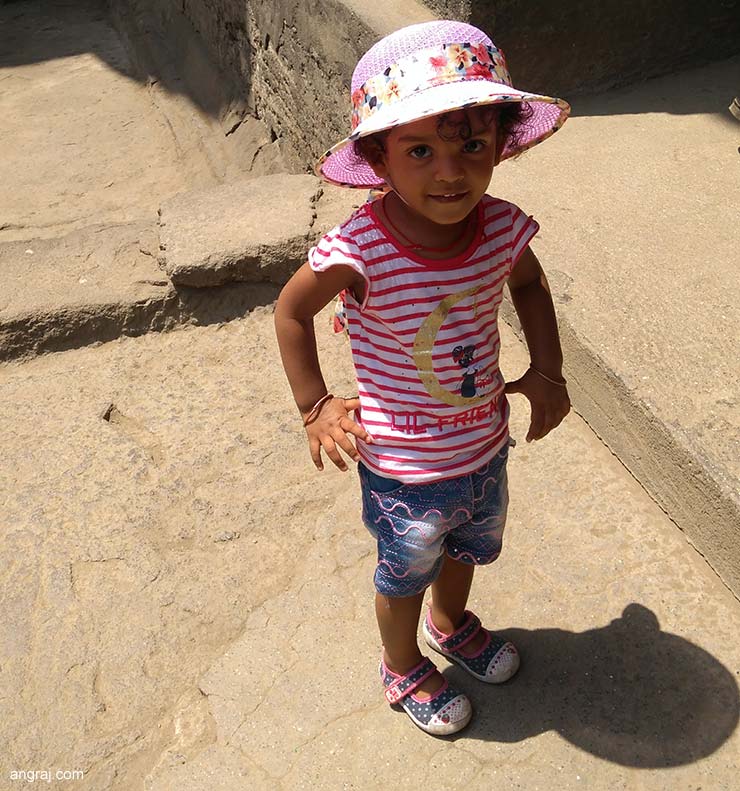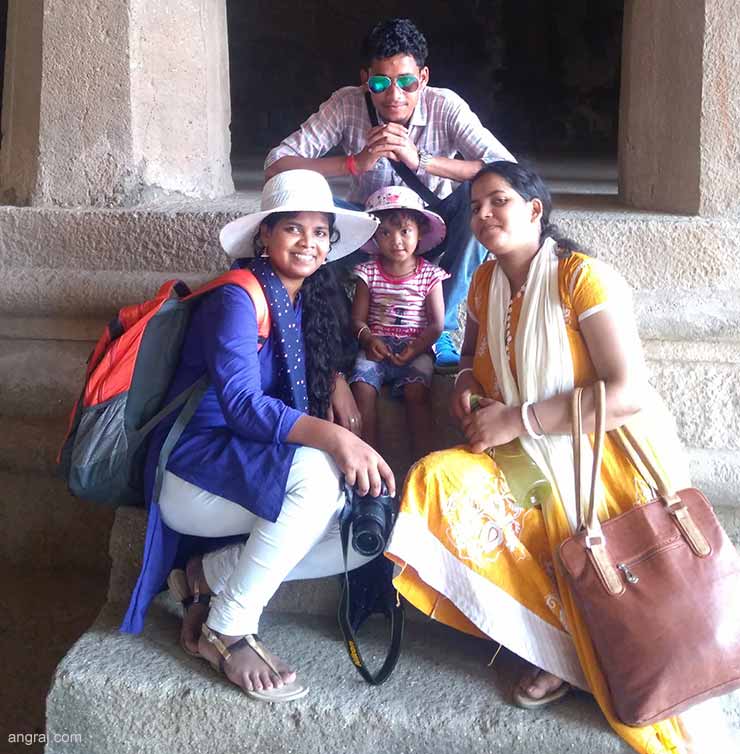The Elephanta Caves was declared by the archaeological survey of India as a Monument of National Importance dated 26.05.1909 and thereafter inscribed by the UNESCO as a World Heritage Site in the year 1987. I have got a chance to visit the site on 14th April 2017 with my family.
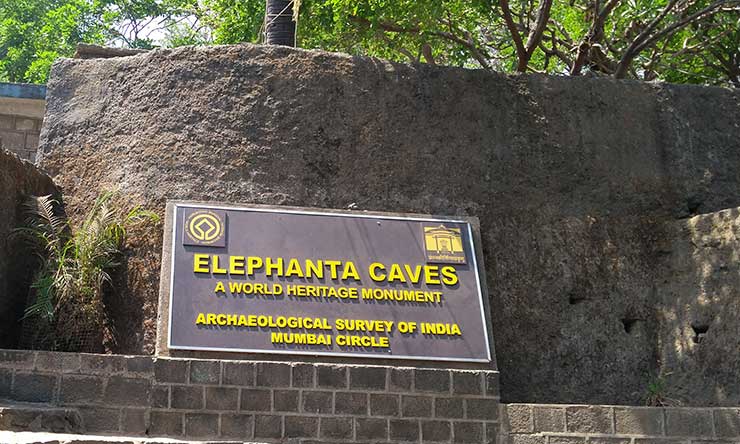

The Island of Elephanta, Originally known as Gharapuri, Derives its name from a massive stone image of Elephant now displayed in the “Veermata Jijabai Bhossale Garden” (Victoria Garden) in Mumbai. The Cave Complex of Elephanta Comprises total of 7 caves of them five are in the lower western side, while 2 are at the eastern top of the hillock. Out of 5 caves at the lower side, the cave no1 is exclusively carved with various manifestation of Lord Shiva. It consists of a pillared hall with a small shrine and four entrance doors flanked by the guardians. While the massive but graceful figures of divinities, guardians and certain architectural features such as the square pillar with cushion capitals suggest Chalukyan influence. The depiction of mountains and clouds and the hairstyles of woman are reminiscent of Gupta art.



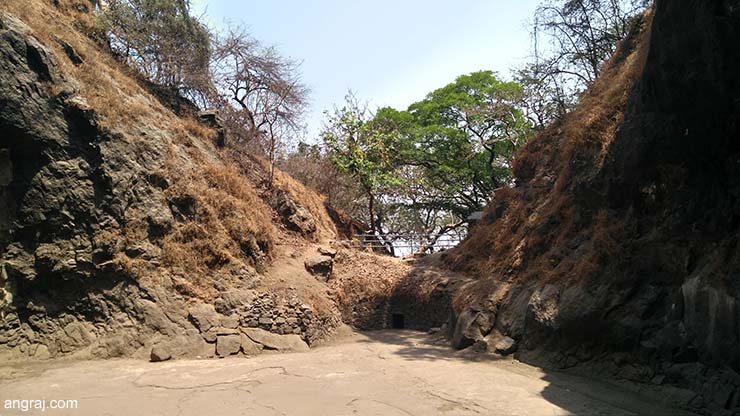




Facing north, this main cave consists of a sanctum and massive hall divided into five bays. The excellent carved panels on the walls of this cave include the Yogeshvara (Lord of Yoga), Nataraja Shiva (cosmic dancer), Siva Parvati, Ardhanarishvara, Gangadhara, Andhakasuravadha, Ravananugraha Shiva, Kalyansunder Murti and Maheshmurti. The ceiling of the main cave is believed to have been originally painted with different colours. The Maheshamurti of Shiva is depicted on the South wall with three aspects of creation, protection and destruction revealing a masterpiece of Chalukyan Gupta art.


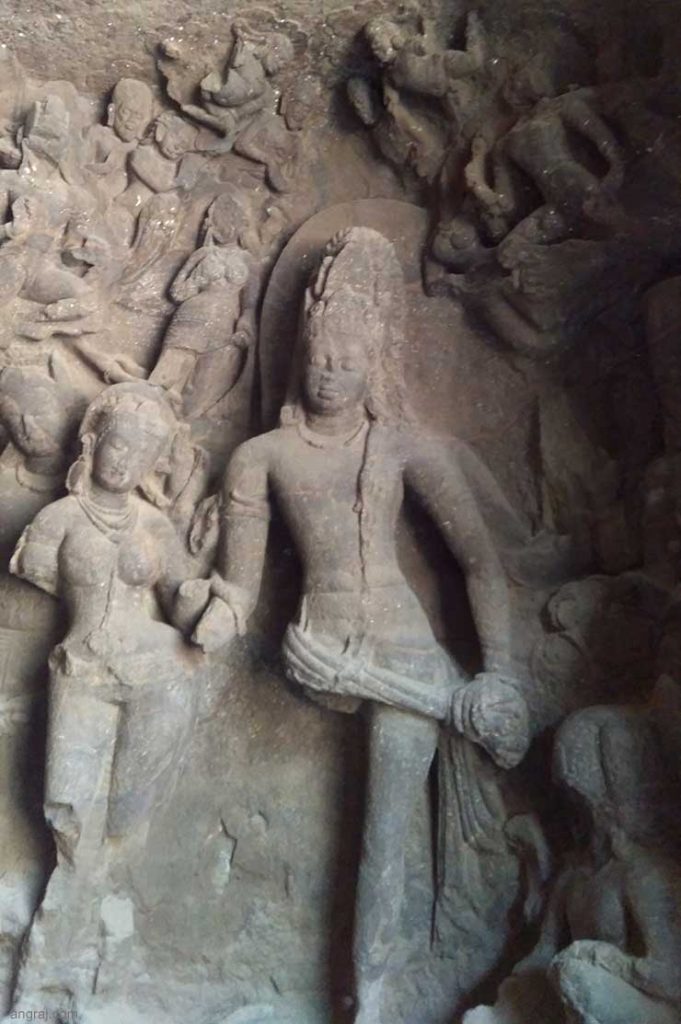



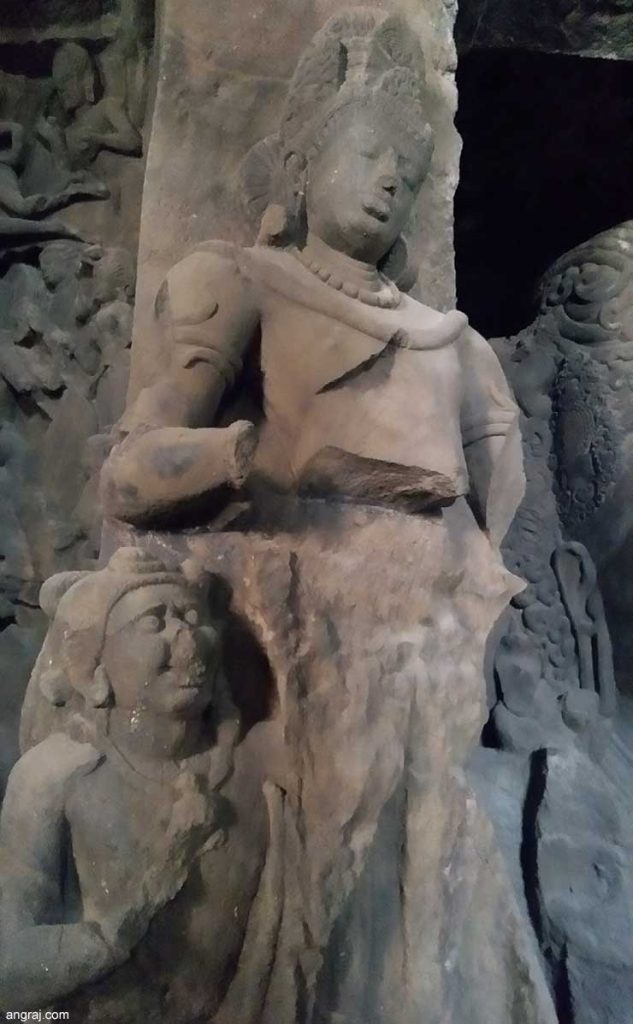

The circular pedestal in the open courtyard marks the seat of Nandi (bull) the vehicle of Shiva. The side cave has a small shrine and a pradakshinpatha (circumambulatory passage) with an interesting panel of Ashtamatrikas ( eight mother Goddesses) flanked by Kartikeya and Ganesha.
Other Caves are plain and lesser embellished. The other antiquarian remains found in the Elephanta Caves are stupa (3rd Century BC) at the Top of the Hillock, Kshatrapa coins of the 4th century AD and some sculptures including Mahishasurmardini, four-headed image, Brahma, Vishnu and Garuda.
